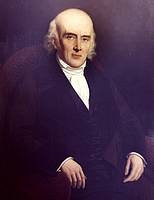Origins
The origins and discovery of homeopathy
Homeopathy was developed more than 200 years ago by the German physician Samuel Hahnemann (1755–1843).
The word ‘homeopathy’ is derived from the Greek words homoios meaning similar and pathos, meaning suffering.
Hahnemann (1755–1843) was a sophisticated scientist, a medical doctor who studied medicine and chemistry. He turned his back on the medicine of his time which, with its bloodlettings and enemas, he found more harmful than beneficial for his patients. He was well-read and got impetus for his work from translating medical and chemistry books into German.
"The physician's high and only mission is to restore the sick to health, to cure, as it is called."
Samuel Hahnemann
Translating Cullen’s Material Medica, his attention was drawn to a paragraph on the effect of Cinchona (quinine) bark in the treatment of malaria. In an experiment he carried out on himself, he took a quantity of Cinchona bark and observed that he developed pathological symptoms similar to those occurring with malaria. He concluded that applying a substance that produces symptoms in a healthy person could cure a disease exhibiting the same symptoms.
This principle, the Law of Similars goes back to antiquity. Hippocrates first referred to it in his various writings. He mentioned that a substance that causes painful urination, coughing and vomiting would also cure diseases with these symptoms. In one of his books he mentions that turpentine will both produce and check haemorrhages in women depending on the quantity used.
Hahnemann made many trials on himself, his family and colleagues to substantiate his simile hypothesis and carefully documented the many successes of treatment of his patients. His principle work, ‘The Organon of Medicine’ (published in 1810) contains the principles of homeopathy.

